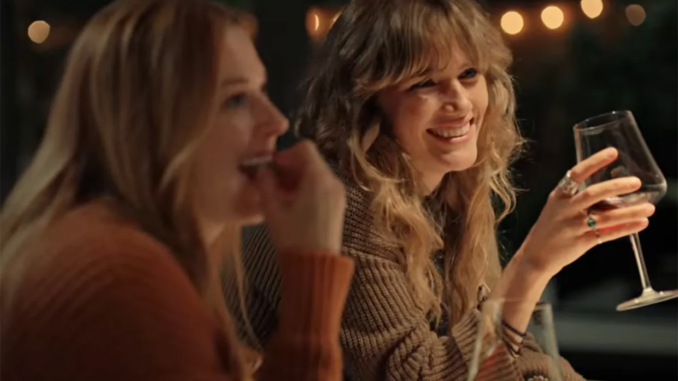
It didn’t happen with the type of overwhelming word-of-mouth social media push that has propelled some of Netflix’s most popular series to the top of the streaming mountain, but the heartwarming, small town drama “Virgin River,” which just released its third season on July 9, has emerged as one of the streaming service’s most beloved and reliable performers since debuting in December 2019.
Based on a long-running series of romance novels by author Robyn Carr and developed for TV by showrunner and executive producer Sue Tenney, the drama stars Alexandra Breckenridge as Melinda “Mel” Monroe, a nurse practitioner and midwife from Los Angeles who moves to the remote Northern California town after a series of traumatic heartbreaks has left her lost and seeking a chance to start over. While the small cabin she was promised by the town mayor (Annette O’Toole) is in great need of repair and the aging town doctor (Tim Matheson) she was hired to assist would rather she disappear, Mel ultimately decided to stay in town a while after a newborn is leaving on the clinic’s doorstep. Well, that and there’s an obvious spark with Jack Sheridan (Martin Henderson), a former Marine living with PTSD and the owner of the only bar and restaurant in town.
With the right amount of romance, soap and small town charm, “Virgin River” is the type of show that screams comfort viewing and is thus appealing to lots of viewers. It has been especially helpful in quelling real-world anxieties during the COVID-19 pandemic. But the perception of the show, which is rarely talked about with any depth in the media, is that it’s not very exciting. After all, it’s not a prestige drama like “The Crown.” It’s not an awards contender like “Ozark” or “The Queen’s Gambit.” It doesn’t even have the overt sexiness of a series like “Bridgerton.” So why, then, are viewers flocking to it en masse?

It might not be obvious to the casual subscriber, but Netflix has made a concentrated push into the romance genre over the last few years, with licensed K-dramas and adaptations of popular romance book series like “Virgin River,” “Sweet Magnolias” and the aforementioned “Bridgerton,” which just received 12 Emmy nominations, leading the way. With few television options for romance fans, this seemingly small effort has allowed Netflix to tap into a previously underserved audience and see maximum gains as a result. It’s also part of a larger endeavor by the streaming service to produce programming that is created by and for women (see also: “Firefly Lane” and romantic comedies like “Set It Up”).
Women, but especially women over 30, are an important demographic and one whose interests have regularly been overlooked or considered inferior despite the fact women overall make up more than half of the U.S. population. population. A general lack of programming made specifically for women could be the result of the fact that men continue to hold the majority of senior positions in the media and entertainment industries, with women filling just 27% of the top roles. Netflix reported in January that women make up nearly half of its workforce (47.1%), including 47.6% of its senior leadership team. Whether or not there is a direct correlation between these employment statistics and the number of programs made for women in recent years requires deeper investigation than this story allows, but it does seem obvious that Netflix has, at the very least, figured out that entertainment made for women is financially wise in addition to filling a cultural void.
Also working in its favor is the fact that “Virgin River” mainly stars women over 35, with many of the show’s supporting cast members being women who are at or over the age of 60. It’s one of the few programs that refuses to play by the ancient, misguided rules of Hollywood, which tends to claim that a woman is washed up by the age of 30 but men in the 60s can still be leading men. Geena Davis has been working for nearly two decades to bring equality to the industry for this reason, and seeing so many roles for “women of a certain age” is a breath of fresh air for many viewers. Their stories are easily the biggest draw of the show, and if you need further proof that Mel and the older women are the stars, the single storyline involving teenagers is the show’s weakest and often feels like nothing more than a half-hearted attempt to also attract younger audiences.
